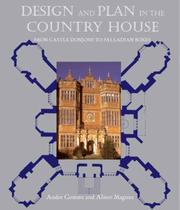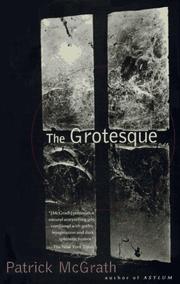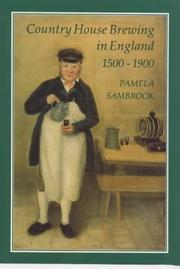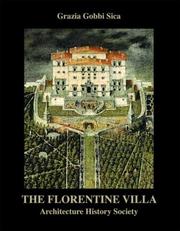Book
ISBN: 0880669462 Year: 1984 Publisher: Monticello (Ill.): Vance bibliographies
Abstract | Keywords | Export | Availability | Bookmark
 Loading...
Loading...Choose an application
- Reference Manager
- EndNote
- RefWorks (Direct export to RefWorks)
Country homes --- Periodicals --- Bibliography
Book
ISBN: 9781801510271 180151027X Year: 2023 Publisher: Dublin Four Courts Press
Abstract | Keywords | Export | Availability | Bookmark
 Loading...
Loading...Choose an application
- Reference Manager
- EndNote
- RefWorks (Direct export to RefWorks)
Country homes --- History
Book
ISBN: 1555904742 Year: 1987 Publisher: Monticello (Ill.): Vance bibliographies
Abstract | Keywords | Export | Availability | Bookmark
 Loading...
Loading...Choose an application
- Reference Manager
- EndNote
- RefWorks (Direct export to RefWorks)
Book
ISBN: 9780847830572 Year: 2009 Publisher: New York Rizzoli
Abstract | Keywords | Export | Availability | Bookmark
 Loading...
Loading...Choose an application
- Reference Manager
- EndNote
- RefWorks (Direct export to RefWorks)
Country homes --- Manors
Book
Year: 1996 Publisher: Wiers: Cercle d'histoire et d'archéologie des Deux Vernes,
Abstract | Keywords | Export | Availability | Bookmark
 Loading...
Loading...Choose an application
- Reference Manager
- EndNote
- RefWorks (Direct export to RefWorks)
Country homes --- Country homes --- Architecture, Domestic --- Architecture, Domestic

ISBN: 9780300126457 030012645X Year: 2008 Publisher: New Haven, CT ; London Yale University Press
Abstract | Keywords | Export | Availability | Bookmark
 Loading...
Loading...Choose an application
- Reference Manager
- EndNote
- RefWorks (Direct export to RefWorks)
Book
ISBN: 9780670828791 0670828793 Year: 1989 Publisher: London: Viking,
Abstract | Keywords | Export | Availability | Bookmark
 Loading...
Loading...Choose an application
- Reference Manager
- EndNote
- RefWorks (Direct export to RefWorks)
Eight of the most beautifuland historic stately homes in England are brought together as never before in "The treasure houses of England". It is a unique pictorial record of these incomparable centres of British heritage, an unforgettable journey through a noble past, and a fitting tribute to the architectural genius which brought them to life. In the words of the Duke of Marlborough, taken from his foreword to the book : "If there is one single word which sums up the importance of the English country home, it is this : heritage... "The treasure houses of England" is a celebration of that heritage. Through words and images it seeks to capture the mood and atmosphere of these magnificient residences, the perfection of their settings, and that quite unmistakable aura which marks the solemn passage of years". The estates themselves are depicted in nearly seventy evocative images which highlight both the perfection of the architecture and the beauty of the surrounding countryside. In addition to this, the most advanced photographic techniques and equipment have been applied to produce eight breathtaking gatefolds nearly one metre in length which captures the estates in all their true splendour. And to add the final touch, each of the statley homes is introduced personally by its owner, giving an intimate portrait of a very British way of life.

ISBN: 0679776214 Year: 1996 Publisher: New York (N.Y.) : Vintage books,
Abstract | Keywords | Export | Availability | Bookmark
 Loading...
Loading...Choose an application
- Reference Manager
- EndNote
- RefWorks (Direct export to RefWorks)
Country homes --- Nobility --- Fiction. --- Fiction.

ISBN: 1852851279 Year: 1996 Publisher: London : Hambledon,
Abstract | Keywords | Export | Availability | Bookmark
 Loading...
Loading...Choose an application
- Reference Manager
- EndNote
- RefWorks (Direct export to RefWorks)
Until the eighteenth century or even later, beer was the staple drink of most men and women at all levels of society. Tea and coffee were expensive luxuries while water might well carry disease. To supply the needs of both owners and servants, every country house with an accessible source of water had a brewhouse, usually close at hand. Although many of the brewhouses still stand, in some cases with the original brewing vessels (as at Lacock and Charlecote), their habitual conversion to other uses has allowed them to be ignored. Yet they are distinctive buildings - as much part of a country house as an ice-house or stables - which need both to be recognised and preserved. The scale of brewing in country houses, which went on to a surprisingly late date in the nineteenth century (with odd survivals, such as Hickleton in Yorkshire, into the twentieth), was often considerable, if small besides that of commercial brewing. Copious records for both brewing and consumption exist. Pamela Sambrook describes the brewing equipment, such as coppers, mash tuns underbacks and coolersthe types of beers brewed, from strong ale to small beer and how they were keptand the brewers themselves, their skills and attitudes. 'English Country House Brewing, 1500-1900' shows the role beer played in the life of the country house, with beer allowances and beer money an integral part of servants' rewards. Generous allowances were made for arduous tasks, such as harvesting. For celebrations, such as the heir's coming of age, extra-strong ale was provided. This book, which is heavily illustrated, is an important and original contribution to architectural, brewing and social history.
Beer --- Country homes --- History --- History

ISBN: 9780415443975 0415443970 Year: 2007 Publisher: Abingdon, Oxon ; New York : Routledge,
Abstract | Keywords | Export | Availability | Bookmark
 Loading...
Loading...Choose an application
- Reference Manager
- EndNote
- RefWorks (Direct export to RefWorks)

 Search
Search Feedback
Feedback About UniCat
About UniCat  Help
Help News
News